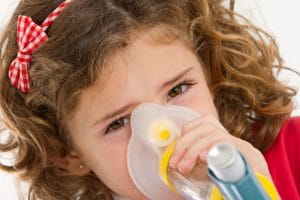
Dr. Sicherer: Asthma is a condition in which the airways narrow, become inflamed and make extra mucus. There are many triggers of asthma including airborne allergens, exercise, infections, smoke, cold air, and others.
Foods that are otherwise tolerated are not likely to be a cause of underlying asthma, but when a food allergen is ingested and causes anaphylaxis, asthma symptoms can result.
It is assumed that people with food allergy who have asthma are more likely to experience severe food-allergic reactions.
Asthma & Anaphylaxis Risk
The reason for this is that the airways are already prone to respond with narrowing. So this is assumed to heighten the anaphylaxis risk.
Therefore, if you have two people with the same sensitivity to a food allergen, and one has asthma and one does not, the individual with asthma is more likely to cough and wheeze during an allergic reaction. And any reaction that includes wheezing is more severe.
Given the above information, having a food allergy is all the more reason to be sure your child’s asthma is being treated appropriately and in good control. There are many good treatments for asthma, including medications, immunotherapy and following advice about avoiding triggers.
Be sure to monitor the asthma symptoms and talk to your doctor about how to keep the asthma under the best possible control. This is good asthma management, and it lessens anaphylaxis risk.
Dr. Scott Sicherer is a practicing allergist, clinical researcher and professor of pediatrics. He is Director of the Jaffe Food Allergy Institute and Chief of Pediatric Allergy and Immunology at the Icahn School of Medicine at Mount Sinai in New York. He’s also the author of Food Allergies: A Complete Guide for Eating When Your Life Depends On It.
Submit a Question View all posts by this medical expert.


